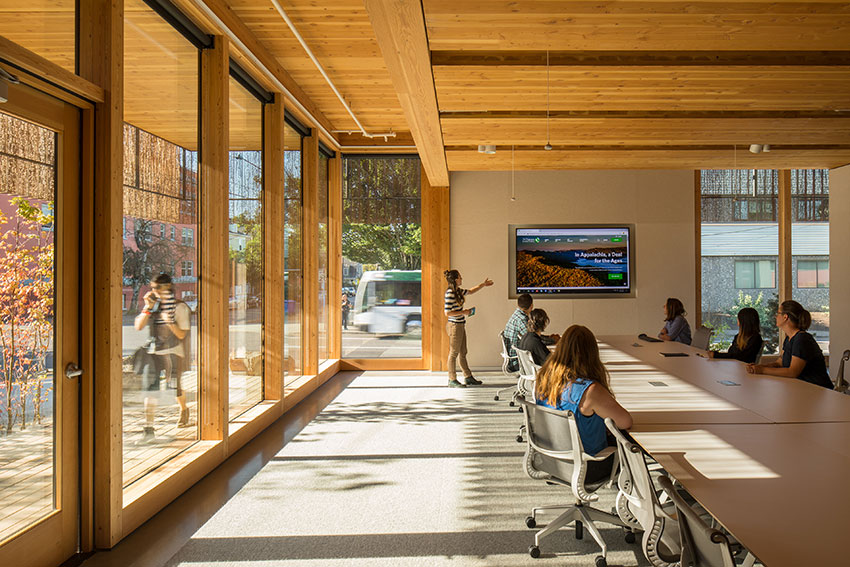The Role of Wood Products in Green Building
LEED
LEED is one of the most well-known green building rating systems. Operated by the U.S. Green Building Council (USGBC), the current version is LEED v4.1. LEED’s Building Design and Construction rating system can be used to certify new construction and major renovation projects for many building types including mixed-use, retail, hospitality, education, and healthcare.
LEED gives designers the ability to earn points for a project by taking design measures that are deemed to positively impact the environment, like using sustainable materials or making efficient use of resources. The number of points earned allows a project to be designated in one of four ways: Certified, Silver, Gold, or Platinum -- with Platinum being the highest level. The Alliance for Sustainable Colorado, a renovation project in Denver, qualified for LEED v4 Platinum certification, in part due to its reuse of the existing wood structural members.
LEED v4.1 uses many of the tools described above, including WBLCA, which allows for a whole building comparison of the environmental impacts of various structural materials. It also recognizes products that have a qualified EPD conforming to ISO 14025 (Environmental Labels and Declarations) and ISO 21930 (Sustainability in Buildings and Civil Engineering Works).
Use of wood as a building material is covered in the Materials and Resources Chapter of LEED v4.1 in the Building Design and Construction (BD+C) category; credits recognize wood's favorable environmental attributes such as certification, recycled content in engineered wood products, and wood that is manufactured and/or harvested within a 500-mile radius of the project.
Building designers can use the LEED credit library to determine which points can be earned for using wood. For example, using the Alternative Compliance Path in LEED v4.1, Responsible Sourcing of Raw Materials provides 1 to 2 points, rewarding project teams for selecting products verified to have been sourced responsibly. To achieve a LEED point under this criterion, the user must know that:
- 100 percent of the wood used is from legal (noncontroversial) sources, and
- 70 percent is from responsible sources
- Once the above two criteria are satisfied, then chain-of-custody (CoC) certification can satisfy the final requirement that at least 25 percent (based on cost) of all permanently installed building materials (such as structural wood framing) meet the Responsible Extraction Criteria. Wood products sourced from certified sources as defined by ASTM D7612-10 (2015) satisfy the requirements of this credit.
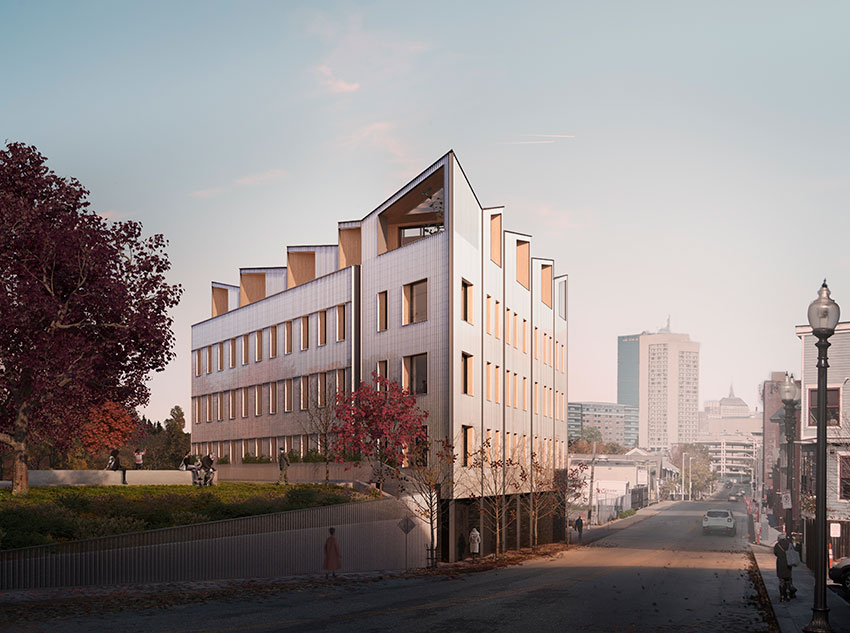
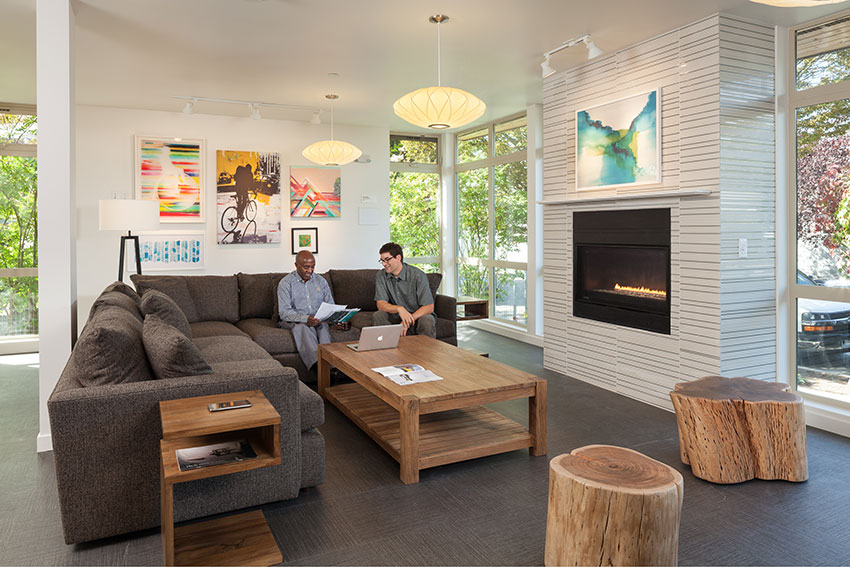
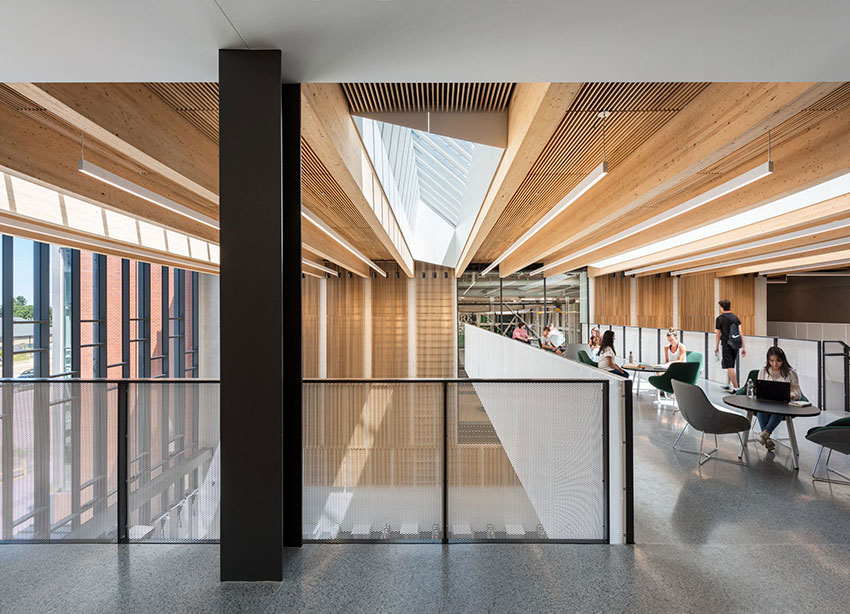
Green Globes
This green building assessment and certification program from the Green Building Initiative (GBI) generates a building score based on a 1000-point rating system. Green Globe certification recognizes responsible material selection as well as efforts to conserve energy and reduce water consumption over time. The assessment is verified by a third party, then awarded a rating based on accumulated points -- either one, two, three, or four Green Globes.
Like LEED, Green Globes has several qualification categories: new construction, existing buildings, core and shell, sustainable interiors, multifamily new construction, and existing buildings. The certification process evaluates multiple assessment areas, including project management, site, energy, water, materials and resources, emissions, and indoor environment. An architect’s choice of wood for structure and finish falls under the materials and resources category.
Specifying wood can help project teams achieve higher scores in their Green Globes assessment, with points related to energy and acoustic properties, renewability, and economic value to both the project itself and to the communities who manufacture the wood products.
Projects can earn points for the use of certified wood products including SFI, FSC, ATFS, and CSA. Points can also be earned for using traditional lumber framing, mass timber, and engineered wood products. Construction methodologies, like prefabricated components, also qualify for Green Globes points due to reduced construction waste.
National Green Building Standard
While many architects think of the National Green Building Standard (NGBS) as limited to single-family homes, this green building certification program covers multifamily construction as well. The goal of NGBS is to help architects build beyond existing code, to design buildings that are sustainable and cost-effective.
Approved by the American National Standards Institute (ANSI), the NGBS is a points-based system with four certification levels – Bronze, Silver, Gold, and Emerald. The current version is the ICC 700-2020 NGBS. Wood use earns points in several categories, including resource efficiency, energy efficiency, and indoor environmental quality. In fact, several wood product manufacturers have specific NGBS-certified products available. NGBS compliance is verified by third-party inspectors overseen by Home Innovation Research Labs.
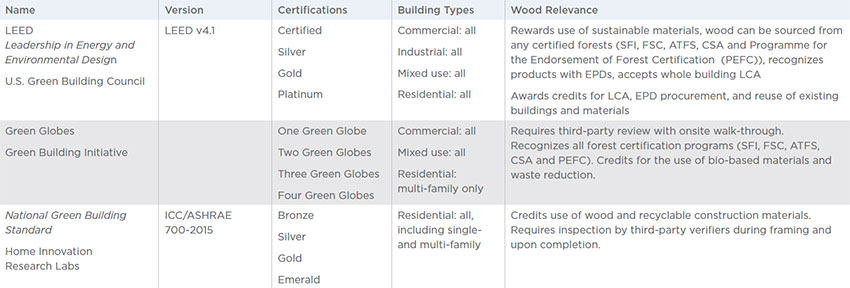
Green building rating and certification systems.





